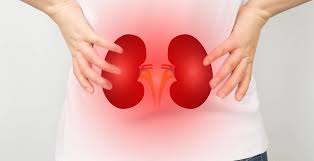In a world brimming with nutritional complexities, one condition continues to perplex both medical professionals and the general public alike – Kwashiorkor. Named after the Ga language of West Africa, where it translates to “the sickness the baby gets when the new baby comes,” Kwashiorkor stands as a testament to the importance of proper nutrition, especially protein intake, for overall health and well-being. In this article, we delve into the depths of Kwashiorkor, unraveling its causes, symptoms, and potential strategies for prevention and treatment.
The Culprit: Protein Malnutrition:
Kwashiorkor is a severe form of malnutrition primarily caused by a deficiency of protein intake, particularly when coupled with a limited supply of calories. The condition often affects young children, making it a global health concern, especially in regions where access to a diverse and balanced diet is limited. Protein is the body’s building block, essential for growth, tissue repair, immune function, and the production of enzymes and hormones. A lack of protein compromises these vital functions, leading to the distinctive symptoms of Kwashiorkor.
Symptoms and Signs:
Kwashiorkor presents a constellation of symptoms that reflect the body’s desperate attempt to cope with protein deficiency. Prominent among these symptoms is edema – the accumulation of fluid in body tissues. This results in the characteristic swollen belly, often mistakenly attributed to overeating. Additionally, individuals with Kwashiorkor may exhibit skin and hair changes, including thinning, discoloration, and a rough texture. Muscle wasting, irritability, lethargy, and stunted growth are also common indicators of this condition.
The Biochemical Puzzle:
Behind the visible symptoms lies a complex interplay of biochemical processes. A deficiency of protein leads to a diminished synthesis of albumin, a crucial protein responsible for maintaining fluid balance in blood vessels. As albumin levels decrease, fluids leak into surrounding tissues, causing edema. The body also enters a state of negative nitrogen balance, where protein breakdown exceeds protein synthesis, further compromising muscle mass and overall health.
Untangling the Causes:
Kwashiorkor’s causes are deeply intertwined with socio-economic factors, including poverty, inadequate food availability, and lack of education. The condition often emerges when children are abruptly weaned from breast milk and transitioned to a diet low in protein-rich foods. Consuming a carbohydrate-heavy diet without sufficient protein exacerbates the risk of developing Kwashiorkor. Infectious diseases and gastrointestinal infections further contribute to malabsorption and nutrient loss, amplifying the condition’s severity.
Prevention and Intervention:
Preventing Kwashiorkor necessitates a multi-faceted approach. Nutrition education and awareness campaigns are pivotal in highlighting the importance of diverse diets rich in protein sources. Promoting breastfeeding and encouraging the consumption of protein-rich foods like legumes, dairy, lean meats, and nuts can significantly reduce the risk of Kwashiorkor. In areas where malnutrition is prevalent, therapeutic interventions may involve specialized ready-to-use therapeutic foods that provide essential nutrients and calories.
Conclusion:
Kwashiorkor stands as a somber reminder of the critical role that proper nutrition plays in human health and development. Beyond its physical manifestations, this condition underscores the intricate connections between socio-economic factors, dietary choices, and global health disparities. By fostering awareness, supporting nutritional initiatives, and addressing underlying causes, we can collectively work towards eradicating Kwashiorkor and ensuring a healthier future for generations to come.































